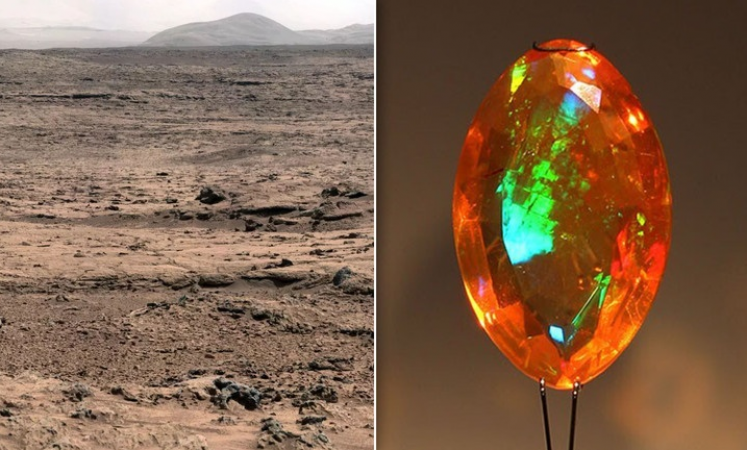
USA: NASA's Curiosity rover has found a water-rich opal gem in Gale Crater on Mars. If the water contained in these gems can be extracted, future crewed missions to the Red Planet may be possible.
The Martian equator, where these opal gems have been discovered, is known to have less water than the poles, where it is known to be abundant.
In August 2022, the Curiosity rover, the largest and most powerful rover ever sent to Mars, has successfully completed a decade on the planet.
Also Read: Israeli troops kill two Palestinians and claim their troops were attacked
The area of Gale Crater, a vast basin with a massive, layered mountain at its center, is where it is currently conducting research. Opals have the potential to be a source of water, so their discovery will be helpful for upcoming space exploration missions.
The researchers noticed that there were light-colored rocks around the fractures in Gale Crater based on observations made by the rover, and further examination confirmed that they were indeed opal.
According to research, the Red Planet has extensive networks beneath its surface that could provide radiation protection and a water-rich atmosphere, making the subsurface more habitable than the surface.
Also Read: One year after Russians arrive violence in Mali increases sharply
A solution of water and silica is used to make opal. Such solutions can be found in various places on Earth, including hot springs, geysers and the ocean floor. Opal is formed when silica particles begin to turn into sediment. Additionally, the structure of opal is less tightly bound than that of minerals, making it easier to remove water.
According to research physicist Travis Gabriel, "Given the extensive fracture network found at Gale Crater, it is reasonable to expect that these potentially habitable subsurface conditions will extend to many other areas of Gale Crater and possibly other regions of Mars as well." " Maybe." These environments may have developed long after Gale Crater's prehistoric lakes dried up.
Also Read: Storm wreaks havoc in California, 19 died so far
The main goal of the Curiosity rover was to find out whether Mars is habitable or not. Based on a sample of "sheepbed" mudstone, the rover found that ancient Mars had the proper chemistry to support living microbes. It has its own Sample Analysis (SAM) instrument on Mars, which is one of NASA's most powerful astrobiology instruments on Mars.